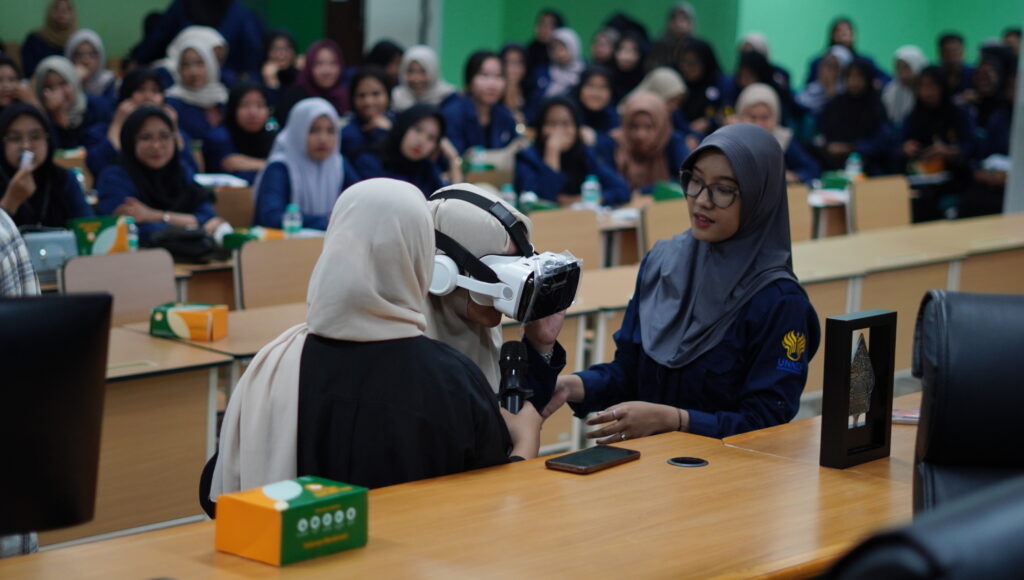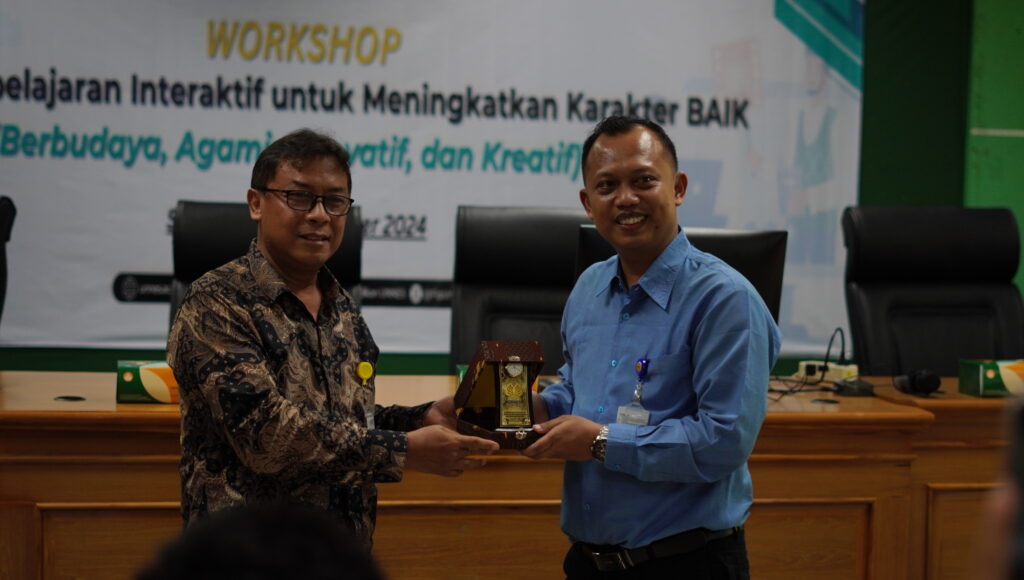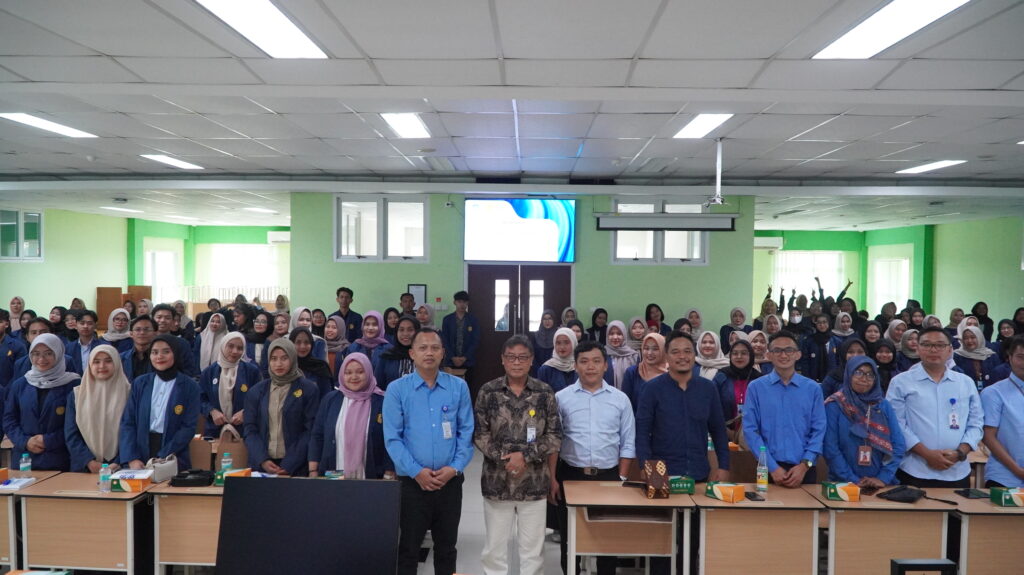
On 5 November 2024, o'clock 13.00-15.00, with
using the Almamater of the University of PGRI Yogyakarta we did
workshop activities at Semarang State University with the theme "Media
Interactive learning to improve good character (Cultured,
Religious, Innovative and creative)”. There we are from PGRI University
Yogyakarta did a question and answer after the speaker delivered
the material. We are very enthusiastic in attending the seminar because of us
Getting very useful knowledge.
The first material delivered by Mr. Novi Setyasto,
S.Pd.,M.Pd. entitled "Application of Augmented Reality (AR) Android -based
in the classroom". Mr. Novi Setyasto S.Pd., M.Pd. convey:
- AR (Augmented Reality) is a technology that combines things
virtual two -dimensional and or three dimensions into a
The real environment then projects these virtual objects
in a real time (Aditama et al., 2019:177). - AR characteristics (Augmented Reality)
a) Combining real shadows and virtual shadows.
Both can be seen at the same time.
b) Interactive in real-time. Virtual content can interact
with real time.
c) Registered in 3D. Virtual objects appear to remain in space. - Example AR (Augmented Reality)
a) Game pokemon.
b) Snapchat filters and Instagram can also be considered as AR!
Both of them put digital information over the real world.
c) Snap chat and Instagram filters are said by Ari because actually
DO NOT HAVE DOG TONE AND EARS.

The second material was delivered by Mr. Ghanis Putra Widhanarto,
S.Pd., M.Pd. with the material what is the difference between AR and Virtual Reality.
- Virtual reality (VR) is a technology that makes users
can interact with the environment of computer simulation results. Reality
Virtual (VR) is a technology that aims to imitate the real world
with the environment produced by the computer and involving
The five human senses (Stay al., 2023:124). - Contoh VR
- Work memory theory
Wiliam James and Herman Ebbinghaus are two pioneers in
Human memory research in the psychology section, namely:
a) Work memory theory (Baddeley, 1974);
b) Cognitive burden theory (Sweller, 1968);
c) Multiple Coding Theory (Pole, 1994);
d) Cognitive development theory (Loore, 1977). - Understanding memory
Memory is the strength or process of reproducing or remembering
what has been learned and maintained (Merriam-Webster). Receptacle
where the mind stores and remembers information (Oxford).
The average human memory capacity of human beings is able to withstand memory
until 7+/- 2 Element at once, and disappear in time 15 until 30
second. (Chi, 1976, Watkins, 1977; Dempster, 1981; Miller 1956).




